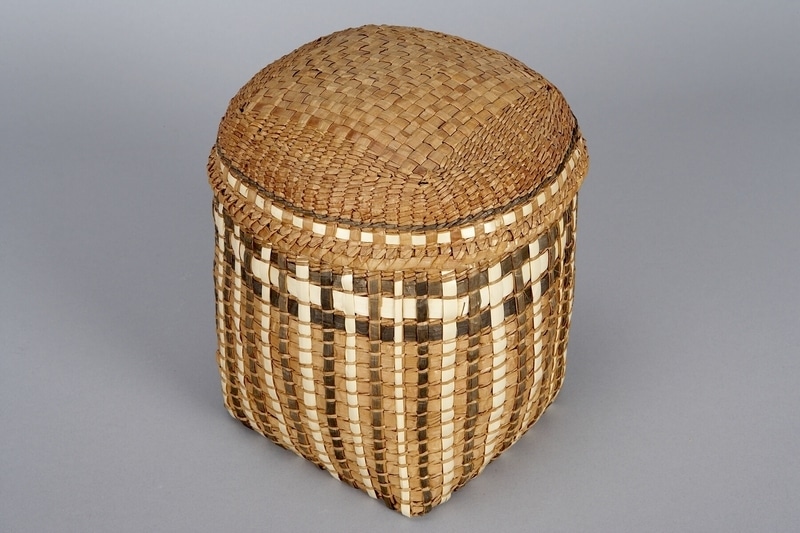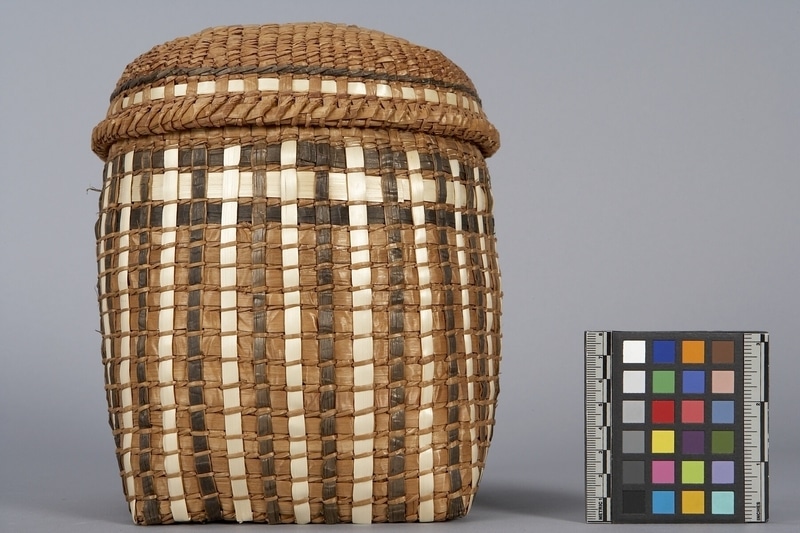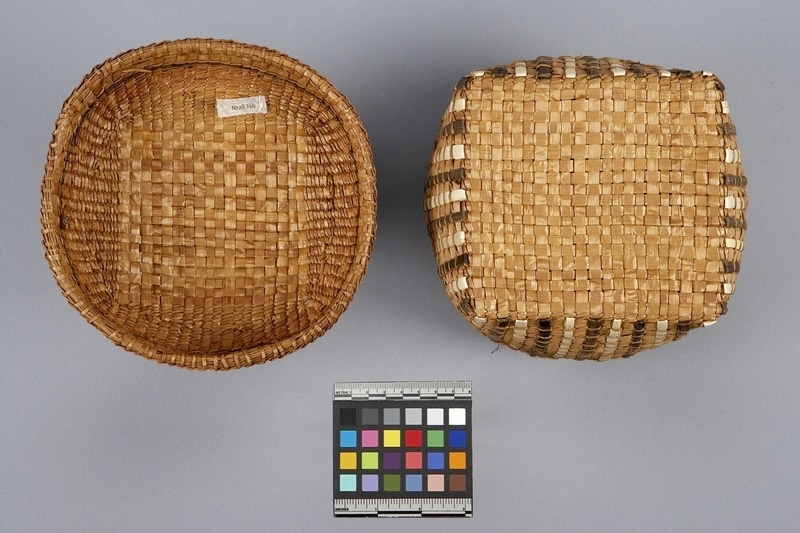Forest Baby Item Number: Nbz834 a-b from the MOA: University of British Columbia



Description
Cedar bark basket (part a) and lid (part b) with white grass and black-dyed cedar bark accents. The square base of the basket and the top of the lid are woven with checker board plaiting. The plaited areas are outlined with double strand twining. The walls of the basket are plaited with a row of twining separating each row of plaiting from the next. The visible vertical elements are overlayed with grass and dyed bark in an alternating black and white pattern. Three horizontal rows are overlayed at the top of the basket also (black, white, black). The lid (part b) has a decorative edge that features a row of triple strand twining in black dyed cedar bark. It is followed by plaiting that is overlayed with the white grass. The lid has a dome-shaped appearance. The assembled basket resembles an acorn in shape.
Cultural Context
basketry; contemporary art
Specific Techniques
Checker board plaiting was used for the base and lid of the basket. Plaiting and double strand twining were used to weave the walls. Triple strand twining was used on the lid as an accent. Some of the warps and wefts were overlayed with other materials to introduce other colours. The black elements are cedar bark that was dyed using natural dyes.
Narrative
Rena Bolton made this basket in Terrace, where she lives with her husband Tsimshian carver Cliff Bolton. She notes of the forest baby baskets: "those are Tsimshian, both of them. This is the type of weave I learned after I moved to the north. I did 15 years research work on the Tsimshian weaving. I started in 1970. I worked along with the people in Victoria [the RBCM]; they allowed me to pick some of their old pieces apart so I could see how they were put together, because I hadn't a clue about how the Tsimshian weaving was done." She adds that she calls baskets of this style "forest babies" because they resemble acorns. She notes: "The little ones that I made, they looked just like great big acorns. I thought this looks like a seed from a tree, and seeds of course are babies. So I thought I'll call it a forest baby."
Item History
- Made by Rena Point Bolton (Maker) in British Columbia, Canada during December 1993
- Collected in Terrace, British Columbia, Canada
- Owned by Rena Point Bolton before August 1994
- Received from Rena Point Bolton (Seller) and Museum of Anthropology Shop Volunteers (Funding source) during August 1994
What
Who
- Culture
- Coast Salish: Sto:lo
- Creator
- Rena Point Bolton (Maker)
- Previous Owner
- Rena Point Bolton
- Received from
- Rena Point Bolton (Seller) and Museum of Anthropology Shop Volunteers (Funding source)
Where
- Holding Institution
- MOA: University of British Columbia
- Made in
- British Columbia, Canada
- Collected in
- Terrace, British Columbia, Canada
When
- Creation Date
- during December 1993
- Ownership Date
- before August 1994
- Acquisition Date
- during August 1994
Other
- Item Classes
- basketry
- Condition
- good
- Current Location
- Case 6
- Accession Number
- 1678/0002 a-b